Every year, we look back at what we’ve accomplished in the last twelve months, and I have to admit that each time we do this, I’m overwhelmed with pride and joy.
Why, because I realize how closely we’ve kept our promise - to be at the forefront of SEO, allowing our clients to benefit from the latest and the most promising opportunities in search.
So many changes have happened at seoClarity over the year, even since our mid-2019 innovations post this past July.
How did we achieve this? Well, we have an incredibly fast-moving development cycle, for one. And, our clients directly drive our feature roadmap. If two or more clients request a specific feature, we build it–it’s that simple.
We also pay close attention to the industry as well. We observe what Google is doing, and drive much of our development around those changes.
So, without any further ado, let me show you what innovations we’ve launched in the past twelve months.
A Quick Word on Our Product Roadmap
Our roadmap and focus are driven by a simple idea - how can we help clients:
- Track the data,
- Manage campaigns,
- Monitor performance,
- Optimize their efforts, and
- Automate everything that’s possible.
We do this by giving them access to all the data, without any artificial restrictions. We provide a whole range of capabilities to manage different aspects of their SEO programs. We deliver all the metrics to monitor the performance and Actionable Insights that allow clients to optimize their efforts better. And, of course, we provide the tools to automate many of the processes.
Our innovations relate to either of the five categories above.
Let’s start with verticals. Images, local listings, and other verticals are becoming more and more important as the evolution of Google’s SERP evolves. As an enterprise SEO platform that prides itself on providing all the data, metrics, and capabilities, we naturally strive to allow clients to manage various verticals as best as possible.
This year, we introduced some new additions to our capabilities.
#1. Amazon Rank Tracking
Many of our clients include their products within the online retailer’s catalog. After all, Amazon is the largest product search engine in the world.
Our clients want to have a central view and the capability of being able to track rankings just like they do in Google. It’s no surprise that companies want to track their rankings and compare their performance with that of their competitors.
Amazon Rank Tracking is a possibility right now–it’s in the early beta stage.
#2. YouTube Rank Tracking
YouTube is the largest video search engine in the world, and once again, a few of our clients asked for the ability to track their YouTube rankings.
However, providing such functionality proved to be a challenge. YouTube changes so often, after all. Rankings can change depending on the time of day, and so much content is being published to the platform every minute that tracking seems almost impossible.
But, we found a way to do it!
YouTube Rank tracking is possible.
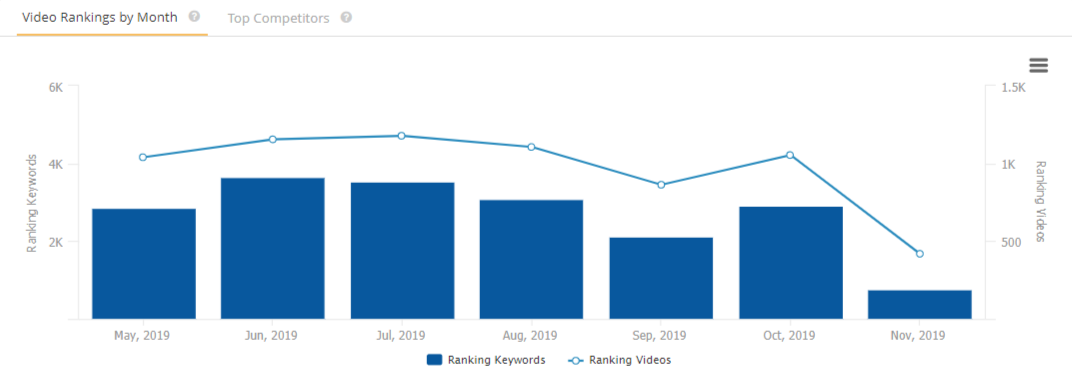
(Video rankings for ABC 7 Chicago in the Research Grid.)
#3. Image Rank Tracking
Images are gaining space in the SERPs. Today, images gain 12.15% of all organic impressions, and generate significant CTR in industries such as Real Estate, Fashion, and Shoes.
seoClarity included image tracking within the SERP features. Now, however, we’ve enhanced it to allow you to track image ranking tracking results within Google Images. Especially important for eCommerce and other manufacturer sites. As we evaluate and track Google's focus, I predict that Google Images will evolve and this part of their engine will become an even more prominent part of the search experience.
#4. Google Maps Tracking
Google Maps is the number one traffic source for local businesses. So of course, many companies would like to know their performance within the Google Map result, not just the local pack.
Not all businesses can appear in the local pack, but many of them wonder how far off they are from being included in that coveted top three results within the SERP.
That’s exactly what our new Maps Tracking capability allows–monitoring a local business’s actual rankings within Google Maps results. We’ve updated the feature to allow for an enhanced experience. Remember, Google Maps’ listings are important if you’re trying to drive foot traffic.
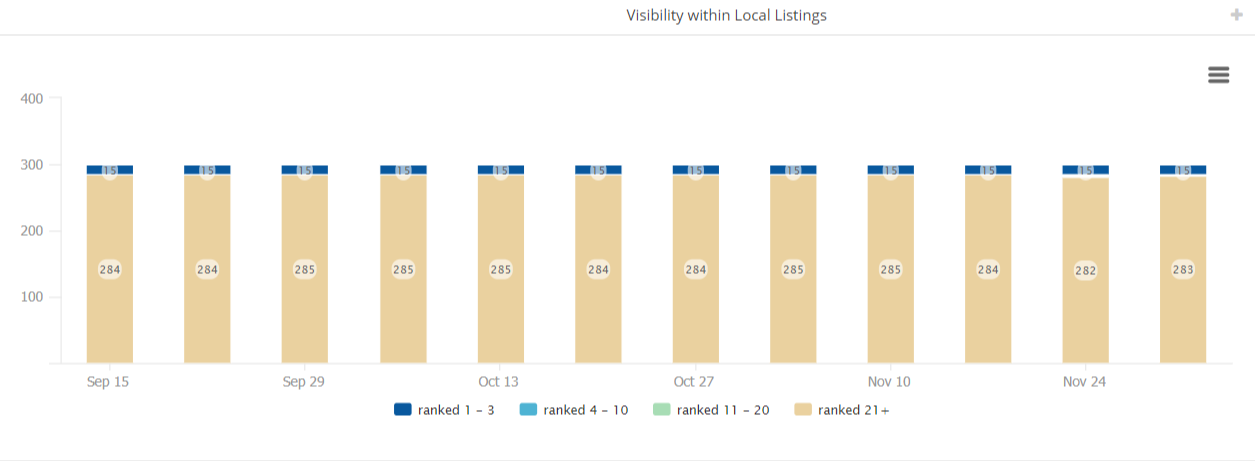
(Google Maps Tracking within Rank Intelligence.)
#5. Customized or Specialized Ranking for SERP Features
Feature snippets gain prominence in SERPs. Zero-click searches are on the rise. It’s no surprise that clients want as much information about their SERP features rankings as possible.
This year, we’ve enhanced our rank tracking capabilities in Rank Intelligence to deliver top competitors for each SERP feature. With it, you can tell which companies beat you in images, local, the job pack, etc. and uncover new opportunities based on this data.
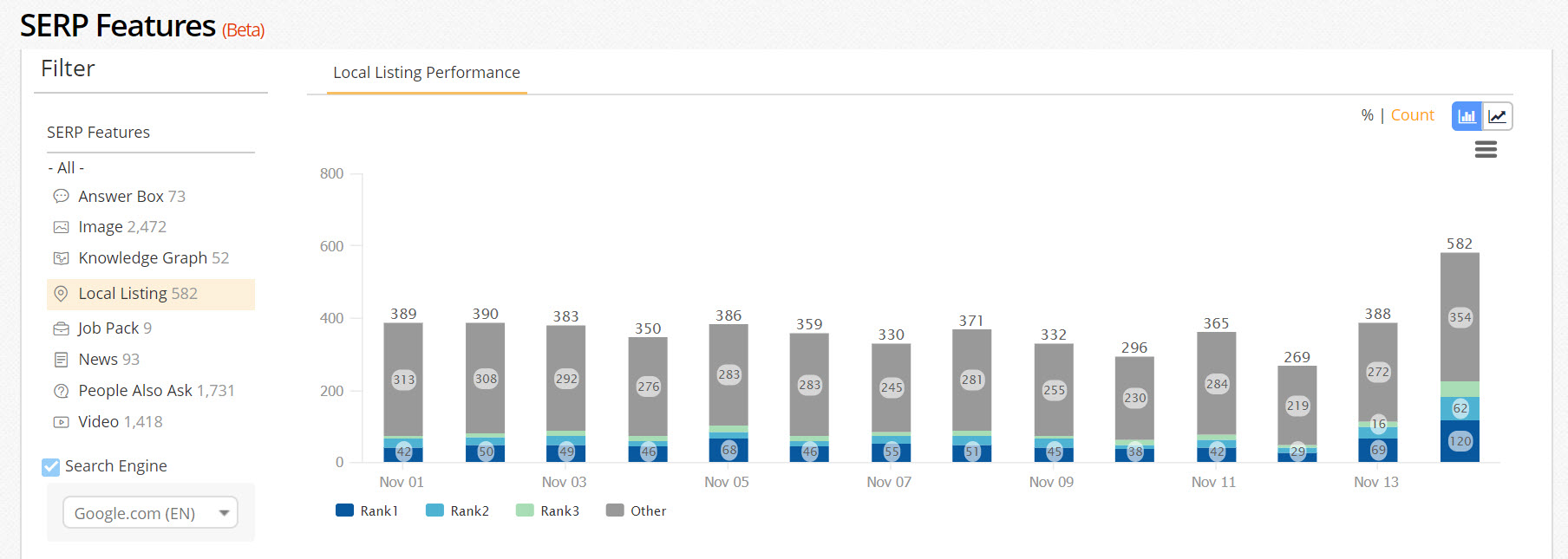
(Top Competitors' Total Ranking Keywords triggering an Local Listing with Total Industry Potential.)
Google is constantly testing and adding new search features within the pages, and we evolve with it. We’ve added FAQ within two weeks of Google’s launch, and have Jobs rankings, video carousel, and more!
We’ve also added a Multi-listing Analysis that reveals how many multiple SERP listings companies (and their competitors) have in the search results.
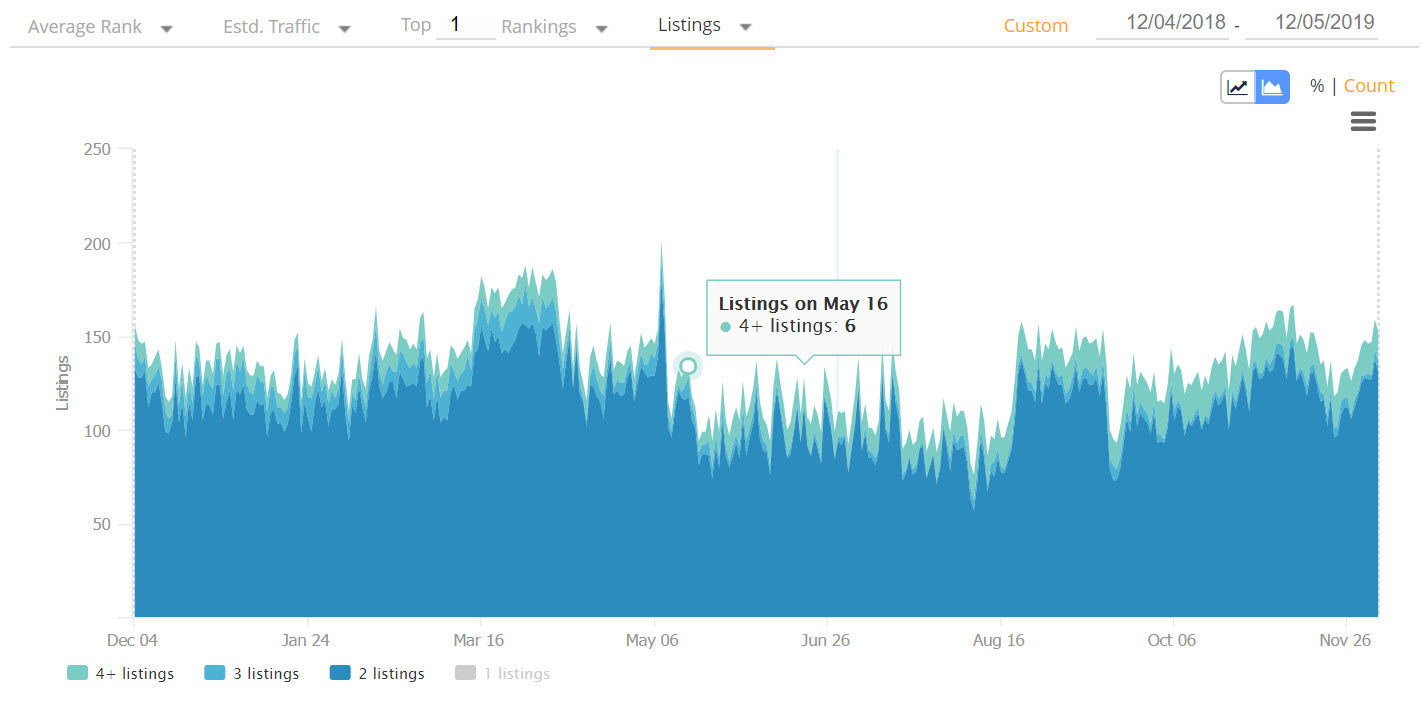
#6. Ad-hoc Ranking Data Retrieval
We’ve also launched the capability for clients to check rankings in real-time. With it, you can simply upload a list of keywords and check their rankings on the fly. Naturally, the system will need some time to process the list. Depending on its size it could be a couple of minutes or hours. However, you no longer need to set the platform and wait for your rankings to populate.
You can also now do a bulk search volume retrieval in the platform to access Keyword Planner Search Volume data on-demand.
Once again, you just need to upload a list of keywords to check whenever you need it, and let the platform collect the data for you.
#7. Keyword Difficulty
Our platform hasn’t implemented keyword difficulty until now for a reason. The traditional approach of basing keyword difficulty score on backlinks only seems arbitrary at best and we decided not to include it in the platform.
Instead, to ensure our clients receive the most comprehensive insights, we’ve developed a unique approach that is more encompassing to all that we know about the SERP.
In addition to using domain authority and backlink data to create a Keyword Difficulty score, seoClarity also leverages billions of data points for every URL found within our Research Grid to assess the difficulty for a keyword, while other tools exclusively look at the two aforementioned metrics. Our approach allows us to look at the usability, relevance, and authority of every page and build a Keyword Difficulty score that more accurately represents the topical authority for the keywords.
With the data, you can evaluate how difficult it will be to rank on page one but also within the top three organic results.
#8. Structured Data Testing Tool for Schema at Scale
Most developers find testing schema super difficult – and for good reason. To do so right now, you have to go to Google’s Schema testing tool, copy and paste your code, and wait for it to process your page and deliver results.
So, we’ve built our own structured data testing tool! It supports all vocabularies and focuses on the 16 or so Schema that Google cares about.
#9. Site Audits Page Analysis Now Capable of 100+ Technical Health Checks
Our site audit technology, Clarity Audits, provides an incredibly comprehensive technical SEO health check, but this year it got even better.
Previously, the crawler focused on page-level analysis. Today, it not only evaluates what’s on the page but also reviews any referenced URLs it finds there, too.
So, if you have a canonical URL on the page, and that canonical itself is broken, set as no-index, or there are any other problems with it, Page Analysis will uncover and report on that as well.
Another enhancement brings tag audits. You can now crawl for stylus code and check for indexability issues, and audit tags for errors or issues.
#10. The Ability to Capture External Links
Another amazing improvement is the ability to capture external links on pages. The platform can now confirm that the link is valid, and even grab the final redirected URL for you to review.
#11. Content Fusion Updates
We’ve been hard at work making our AI-powered content writer even better, and we launched some amazing improvements this year.
First of all, Content Fusion now speaks 16 languages. It allows international brands to analyze topics in the target language and provide recommendations for optimization.
Beta languages include Swedish, Norwegian, Finnish, Dutch, and Danish, while Alpha languages include German, Spanish, and French.
You can also optimize for geo-location content.
Entity recognition got better, too. The updated system can now recognize more entities by including Google’s own entity recognition, Google’s knowledge graph.
This means that we can analyze content and identify whether there is something in it that Google would recognize in its own knowledge graph. Similarly, if Google recognizes it, we do too.
The Must Use Keywords section now also suggests interlinking opportunities to build relevant content hubs.
Finally, there is a full Content Fusion API available as well to allow you to bulk check and optimize many pages at scale, and you can now integrate Content Fusion within your external workflow with ease.
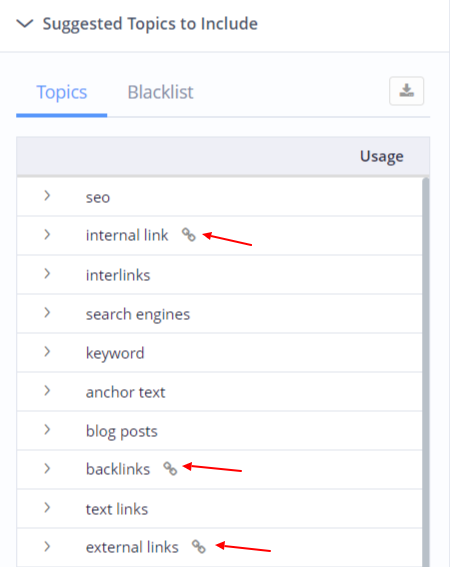
(Content Fusion now suggests interlinking opportunities.)
#12. You Can Now Analyze User Intent Across the Entire Content Workflow
The importance of the user intent to rankings and SEO success is irrefutable.
As a matter of fact, my colleague Chris Sachs said:
“Focusing on the intent is a must-have. If you’re not doing this, you’re missing out on an opportunity to gain any significant search visibility.”
seoClarity has been reporting on user intent for quite a while now. And you can now track it across the entire content workflow, from researching keywords to optimizing the content with Content Fusion, writing, and improving pages further. Read more about how seoClarity applied user intent at every stage of content development.
Is That It?
No, of course not. There are so many enhancements and launches in 2019, these are the updates that pack a big punch! Plus, so many more amazing new features and enhancements in the works. For instance, check back with us in early 2020 for so many additions to seoClarity in automation. We’re also working on dynamic data correlations (without downloading to excel)! Essentially, correlate any two metrics the platform with anything else. This will allow you to correlate SEO tactics to SEO performance and analyze data in a whole new way.
seoClarity is always growing. See how much we’ve changed in the past, and the fast pace of our development in our list of 2018 innovations to the platform.




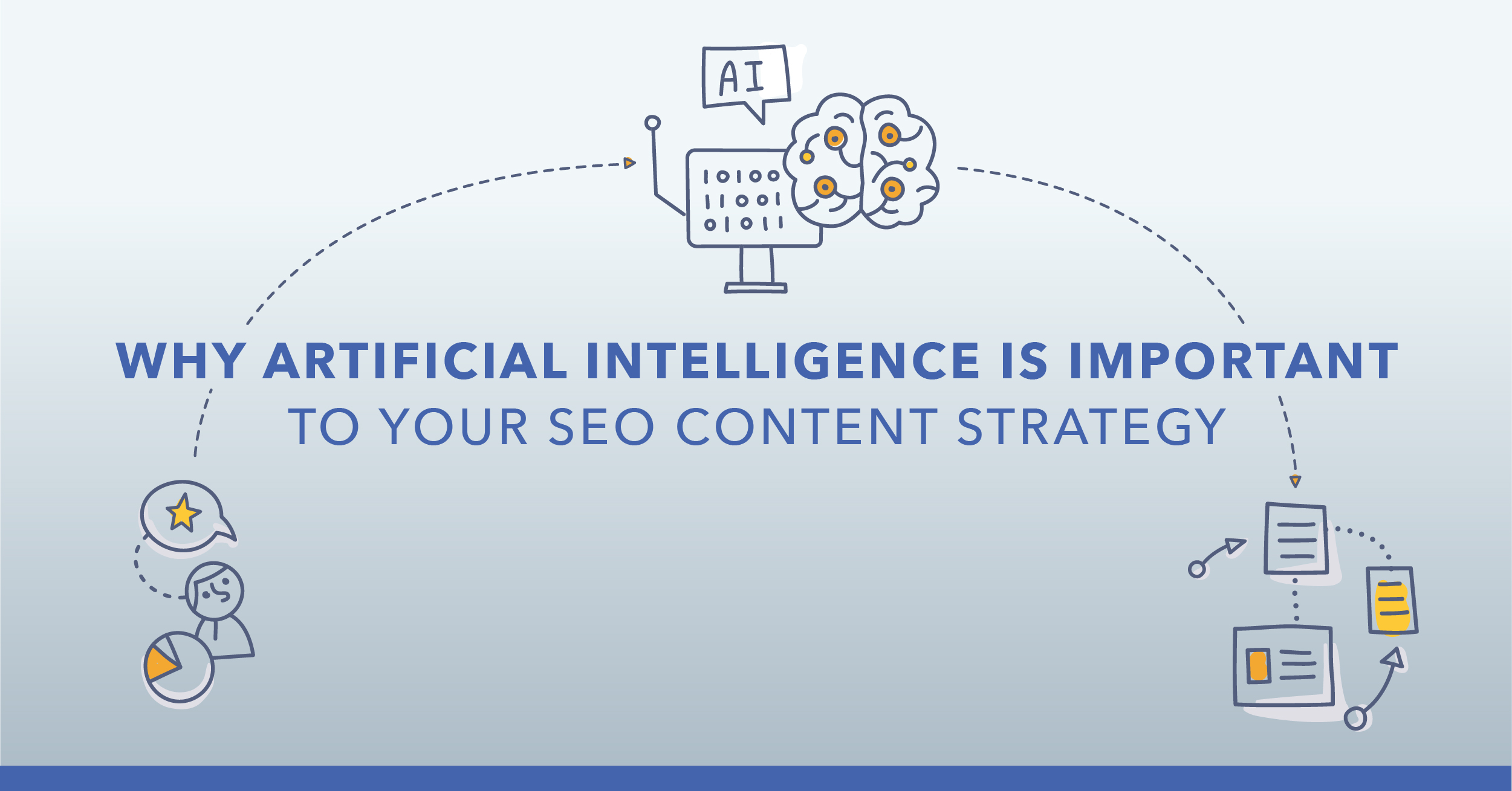
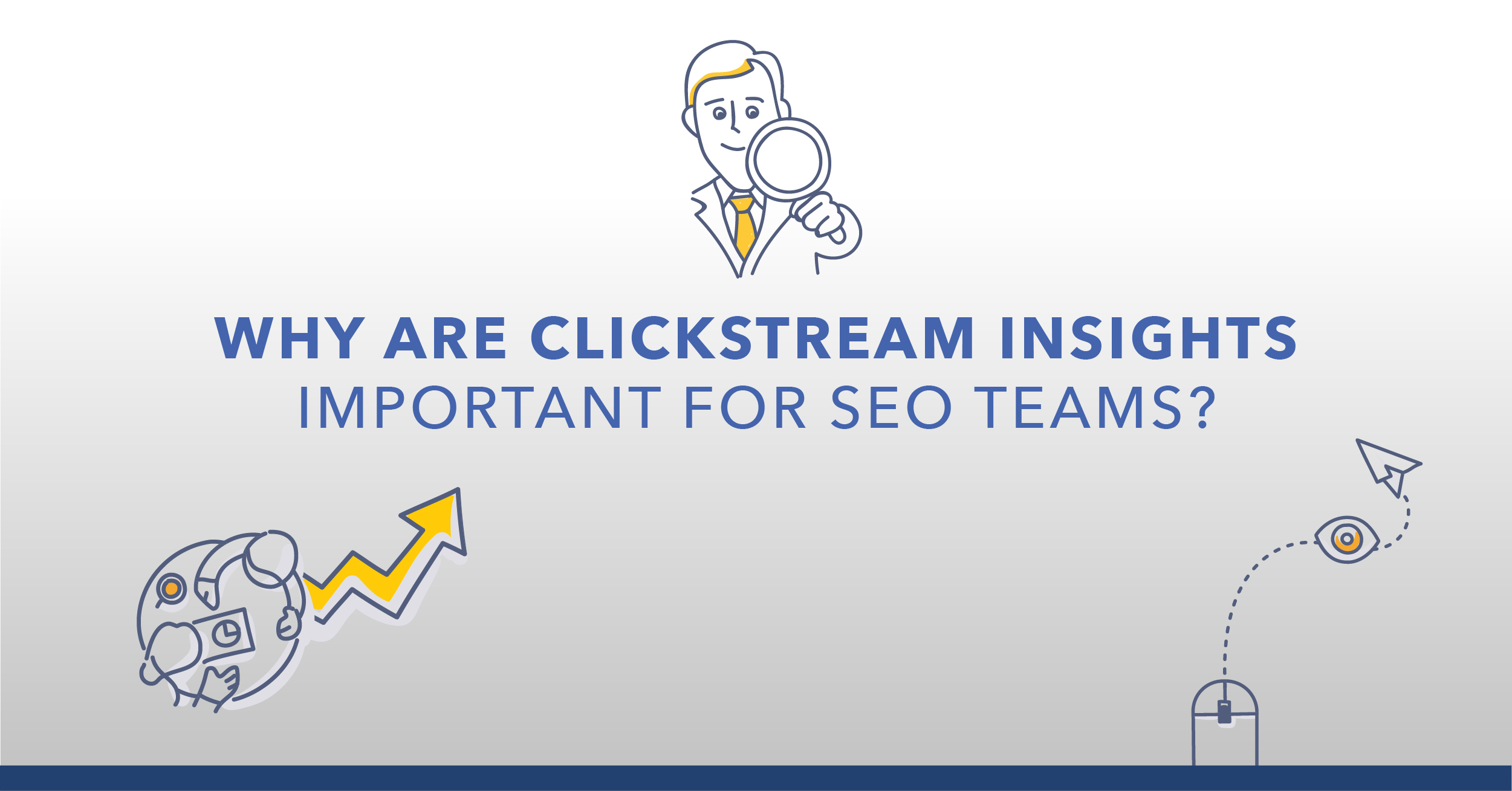

Comments
Currently, there are no comments. Be the first to post one!